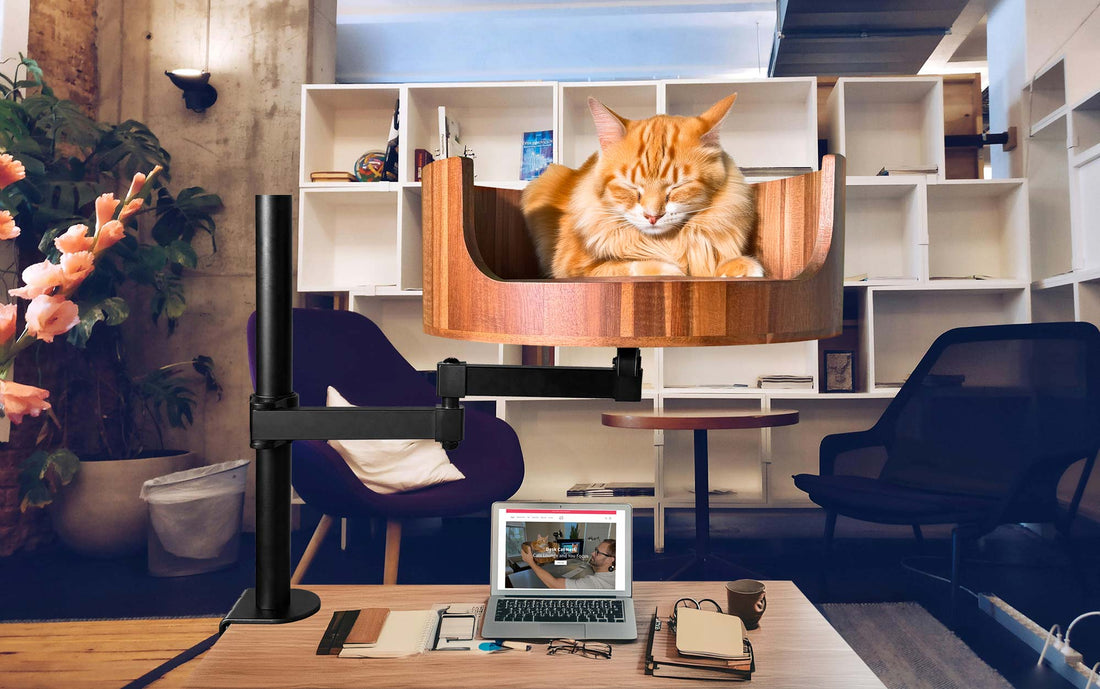
Why Do Cats Wiggle Their Tails: Understanding Feline Behavior
Share
Have you ever found yourself mesmerized by the sight of a cat's tail wiggling back and forth? This seemingly simple behavior actually holds great significance in the world of feline communication. In this article, we will delve into the intricate world of feline behavior and explore the reasons behind why cats wiggle their tails.
Desk Cat Nest is a leading authority on feline behavior, and we have gathered insights from experts in the field to provide you with a comprehensive understanding of this fascinating topic. From the playful flick of a tail during a game of chase to the subtle swish when encountering a new feline acquaintance, every tail movement tells a story in the world of cats. By understanding the reasons behind these behaviors, we can deepen our connection with our feline friends and strengthen the bond between human and cat. So grab your favorite feline companion and join us on this journey to unlock the secrets behind why cats wiggle their tails.
1. Cats wiggle their tails as a form of communication, signaling their emotions and intentions to those around them.
2. Tail wiggling can indicate excitement, arousal, agitation, or even aggression depending on the context and accompanying body language.
3. Understanding cat tail language is crucial for cat owners to better interpret their pet's feelings and avoid potential conflicts.
4. Tail wiggling can also signify a playful mood in cats, inviting interaction and engagement with their human companions.
5. By observing and responding to their cat's tail movements, owners can strengthen their bond and enhance their feline friend's well-being.
1. The Purpose of Tail Wiggling in Cats
Cats often wiggle their tails as a way to communicate with those around them. Tail wiggling can signal a variety of emotions and intentions, from excitement and playfulness to irritation and aggression. By understanding the different types of tail wiggles and what they mean, cat owners can better interpret their feline's behavior and respond accordingly.
2. Tail Language in Cats
Cats use their tails as a form of nonverbal communication, expressing their moods and feelings through different tail movements. For example, a tail held high and wagging gently can indicate that a cat is feeling friendly and happy, while a puffed-up tail accompanied by rapid wiggling may indicate fear or aggression. By paying attention to these subtle signals, cat owners can better understand and respond to their pet's needs.
3. Case Studies and Examples of Tail Wiggling in Cats
There are many real-life examples and case studies that illustrate the importance of tail wiggling in feline behavior. For instance, a cat may wag its tail vigorously while playing with a toy or another cat, signaling excitement and enjoyment. On the other hand, a cat may flick its tail back and forth rapidly when feeling threatened or annoyed. By examining these case studies, cat owners can gain valuable insights into their own pet's behavior.
Frequently Asked Questions: Why Do Cats Wiggle Their Tails?
Why do cats wiggle their tails?
Cats often wiggle their tails when they are expressing excitement, anticipation, or prey drive. This behavior can also indicate that they are feeling playful or may be preparing to pounce on a toy or another animal.
Should I be concerned if my cat wiggles its tail?
In most cases, tail wiggling is a normal and harmless behavior for cats. However, if your cat's tail wiggling is accompanied by other signs of distress or aggression, it may be best to consult with a veterinarian to rule out any underlying health issues.
Can I train my cat to stop wiggling its tail?
While you may be able to redirect your cat's behavior through positive reinforcement training, it is important to remember that tail wiggling is a natural instinct for cats. Instead of trying to stop this behavior entirely, you can provide appropriate outlets for your cat to express their excitement, such as interactive toys or engaging play sessions.
Is the Desk Cat Nest a good solution for cats who wiggle their tails?
The Desk Cat Nest can provide a comfortable and secure space for your cat to relax and unwind, which may help reduce stress and anxiety that could contribute to tail wiggling behavior. However, it is always best to consult with a veterinarian or animal behaviorist for personalized advice on addressing your cat's specific needs.
In conclusion, providing your cat with a comfortable and secure space, such as a Desk Cat Bed, can help reduce stress and anxiety that may be causing tail wiggling behavior. The elevated design of the Desk Cat Bed allows your feline friend to feel safe and secure while keeping a watchful eye on their surroundings. Additionally, the plush cushioning offers a cozy retreat for your cat to relax and unwind, ultimately promoting a sense of calm and contentment. Invest in a Desk Cat Bed today to create a peaceful sanctuary for your beloved pet and help alleviate any tail wiggling tendencies they may be displaying.



















































